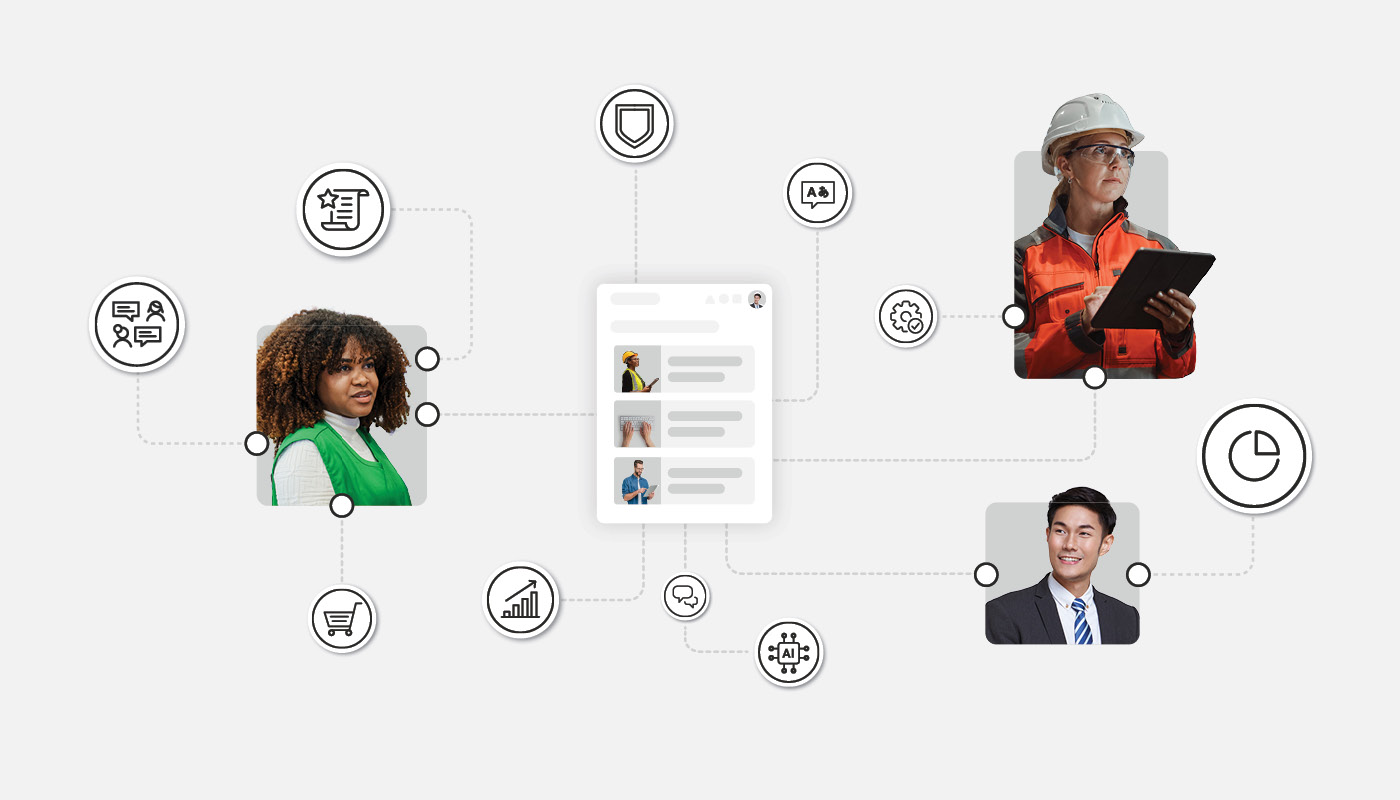How to choose the right LMS

How to successfully choose an LMS for your organisation
In large companies, deciding on a learning management system (LMS) usually means a long-term commitment to the provider. Choosing the right LMS is difficult. Switching systems is a complex process that isn’t decided lightly. This makes it all the more important to find the right provider, one with whom your organisation will be happy for a long time. If you are looking for a new learning platform, here you will find out what matters when choosing an LMS.
The first step: analyse your needs
If you're dissatisfied with your current LMS, the first thing you should do is list the reasons why. This will help you identify the features your new system must have. However, if you’re switching systems anyway, you can also take the opportunity to look to the future:
- How much will the company grow, and what does the LMS need to be able to do to keep up?
- What trends in elearning could benefit you?
- What systems might you want to integrate in the future?
Get management buy-in
Involve key stakeholders from different departments in these considerations to get a complete picture. This ensures the new LMS fits the needs of the entire organisation. You should also consider your organisation's current and long-term goals, making sure that your chosen solution aligns with these. This will make it easier to justify the choice to management.

Criteria for choosing an LMS
Your list of criteria is likely as individual as your organisation, and certain areas will be more important to you than others. However, the following criteria are relevant for most companies when searching for the right LMS:
UX and learning architecture
- User-friendliness: A modern and intuitive interface appeals to users and makes navigation easy. This way, they enjoy being on the platform and are motivated to take additional courses.
- Scalability: The new LMS should be able to keep up with a growing company, for example, in terms of user numbers. If the company operates internationally or plans to do so, multilingual support is important.
- Automated workflows: The larger the company, the more time the L&D team wastes on manual processes. Bookings, approvals, and the creation of certificates should be automated through predefined workflows.
- Comprehensive reporting features: L&D managers make data-driven decisions to improve learning. Convincing reporting capabilities with filtering and sorting options are therefore an important foundation.
- Flexibility: A powerful LMS can be adapted to the organisation’s needs, allowing for customised learning paths or differentiated role and user group settings.
- Integrations: Connecting various systems (HR, CRM, etc.) via integrations creates a strong learning ecosystem. Ensure the integrations you need are available.
- Security and data protection: An outdated system can quickly develop security gaps or fall behind on data protection standards. Secure hosting, GDPR compliance, and ISO certifications are just a few aspects to consider. Involve IT and data protection experts to ensure security.
Choosing an LMS for enterprise
- Reliable support: When questions or problems arise, you should not be left on your own. Choose a provider known for reliable support who is invested in continually improving learning within your organisation.
- Blended learning: Many companies now combine in-person and online training as standard. Choose an LMS that supports this approach to provide your workforce with hybrid learning experiences.
- eLearning trends: The corporate learning world is evolving. For example, AI improves efficiency and personalises the user experience, gamification elements engage learners, and social learning fosters group dynamics. Opt for a modern learning platform that excels in these areas.
- Mobile optimisation: Employees no longer learn only on their PC or laptop, but also on their smartphones. This is particularly important for companies where many employees do not work at desks or have computers. The system should be at least responsive, ideally offering its own app.
- A convincing provider: Finally, take a closer look at the provider itself. Is it an established company with years of experience? Can it showcase reputable clients, ideally from your industry?
In addition to these general aspects, also consider areas that are particularly relevant to your organisation’s needs when choosing an LMS. For example, you may want to offer training for customers or partners and need a system that is well-suited to this.
Real success stories
Comparing possible solutions
Next, research various options that meet your criteria. This will lead to a shortlist of providers from whom you can request proposals. Arrange initial demos to get a feel for the different systems. Based on this, you can likely rule out some providers and narrow down your options.
Take your time with the decision and involve relevant stakeholders in the process. Compare the shortlisted solutions carefully across all aspects important to your organisation. You will likely have multiple meetings with providers where you can ask all the questions you need. By the end, you will know which LMS is right for your organisation.
LMS selection: what happens next
Once you’ve chosen an LMS, the migration process begins. During this process, you will work closely with the new provider to ensure that all necessary courses and employee data are transferred, and that the new system is used to its full potential.
If you want to learn more about the migration process, download our free LMS Upgrade Guide. It also includes a comprehensive requirements catalogue to help you approach the selection of your new LMS in a structured way.
Get your free copy of The LMS Upgrade Guide:

